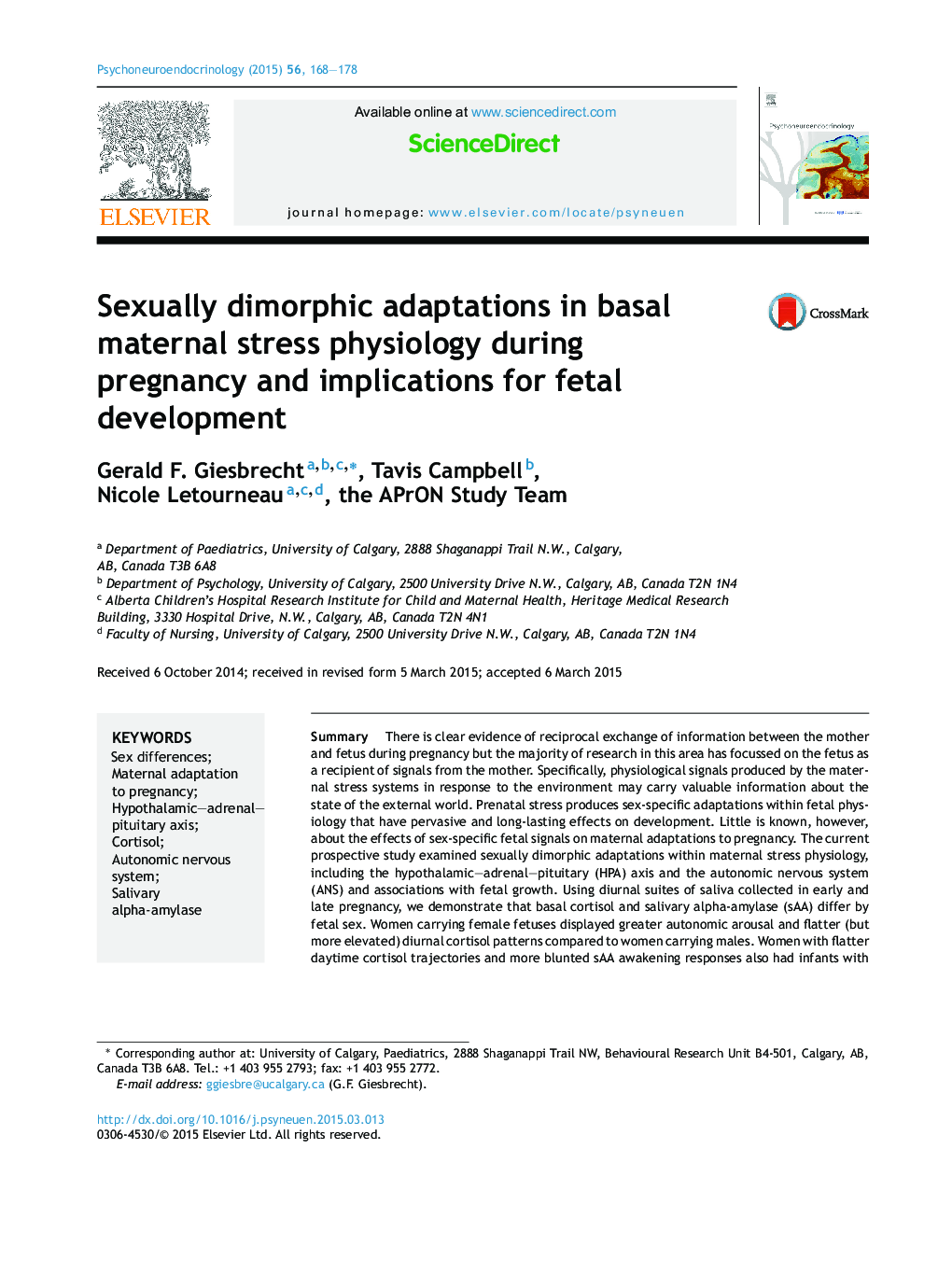| کد مقاله | کد نشریه | سال انتشار | مقاله انگلیسی | نسخه تمام متن |
|---|---|---|---|---|
| 6818856 | 547484 | 2015 | 11 صفحه PDF | دانلود رایگان |
عنوان انگلیسی مقاله ISI
Sexually dimorphic adaptations in basal maternal stress physiology during pregnancy and implications for fetal development
ترجمه فارسی عنوان
سازگاری جنسی دگرگون شده در فیزیولوژی استرس مادران در دوران بارداری و پیامدهای آن برای رشد جنین
دانلود مقاله + سفارش ترجمه
دانلود مقاله ISI انگلیسی
رایگان برای ایرانیان
کلمات کلیدی
تفاوت های جنسی، سازگاری مادر با بارداری، محور هیپوتالاموس-آدرنال-هیپوفیز، کورتیزول، سامانه ی عصبی خودمختار، آلفا آمیلاز بزاق،
موضوعات مرتبط
علوم زیستی و بیوفناوری
بیوشیمی، ژنتیک و زیست شناسی مولکولی
علوم غدد
چکیده انگلیسی
There is clear evidence of reciprocal exchange of information between the mother and fetus during pregnancy but the majority of research in this area has focussed on the fetus as a recipient of signals from the mother. Specifically, physiological signals produced by the maternal stress systems in response to the environment may carry valuable information about the state of the external world. Prenatal stress produces sex-specific adaptations within fetal physiology that have pervasive and long-lasting effects on development. Little is known, however, about the effects of sex-specific fetal signals on maternal adaptations to pregnancy. The current prospective study examined sexually dimorphic adaptations within maternal stress physiology, including the hypothalamic-adrenal-pituitary (HPA) axis and the autonomic nervous system (ANS) and associations with fetal growth. Using diurnal suites of saliva collected in early and late pregnancy, we demonstrate that basal cortisol and salivary alpha-amylase (sAA) differ by fetal sex. Women carrying female fetuses displayed greater autonomic arousal and flatter (but more elevated) diurnal cortisol patterns compared to women carrying males. Women with flatter daytime cortisol trajectories and more blunted sAA awakening responses also had infants with lower birth weight. These maternal adaptations are consistent with sexually dimorphic fetal developmental/evolutionary adaptation strategies that favor growth for males and conservation of resources for females. The findings provide new evidence to suggest that the fetus contributes to maternal HPA axis and ANS regulation during pregnancy and that these systems also contribute to the regulation of fetal growth.
ناشر
Database: Elsevier - ScienceDirect (ساینس دایرکت)
Journal: Psychoneuroendocrinology - Volume 56, June 2015, Pages 168-178
Journal: Psychoneuroendocrinology - Volume 56, June 2015, Pages 168-178
نویسندگان
Gerald F. Giesbrecht, Tavis Campbell, Nicole Letourneau, the APrON Study Team the APrON Study Team,
